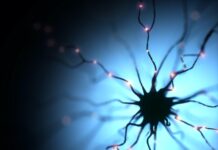The Perfect Health Diet was written in 2012 by Paul Jimenet, PhD., and Shou-Ching Jaminet, PhD., a married research team specializing in astrophysics and molecular biology and cancer, respectively. The eating plan they vouch for parallels the principles behind Paleo/ketogenic, with the addition of resistant starches like those found in root vegetables and white rice. They theorize a trifecta of factors related to disease, health and aging, which includes nutrient deficiencies, food toxin poisoning, and chronic infections aggravated from bacteria, viruses, fungi, protozoa, and parasitic worms fed by excess nutrition and suppressed immune function from nutrient deficiencies and circadian rhythm disruption (Jaminet & Jaminet, xvii). In addition to the anecdotal testimonials from followers of the diet that are sprinkled adjacent to scientific explanations, the couple draws from ample scientific literature available to them at the time of writing the book, including randomized controlled trials with humans and animals, as well as nutrient breakdowns of regional diets correlated with health and longevity, especially Pacific Islander diets from Okinawa, Katavi, and Hawaii (Jaminet & Jaminet, 239-240). The referenced studies and thorough examination of the human body’s macronutrient composition formulate the basis of a diet plan that recommends 64.4% of calories from fatty acids, specifically short-chain and medium-chain saturated fatty acids and monounsaturated fats, 22.5% of calories from amino acids, and 13.1% of calories from carbohydrates to sustain lean muscle mass (Jaminet & Jaminet, 21). The authors claim that certain nutrients found in most processed foods, especially omega-6 fatty acids and simple sugars like fructose, are toxic to the body because of omega-6’s oxidative properties and fructose’s competition with glucose receptors that overwork the liver and package more cholesterol into the blood.
Based on assigned studies from previous graduate nutrition courses, the Perfect Health Diet may be onto something. The authors acknowledge that nutrients constantly interact with each other. While this confounds the effects of metabolism (i.e. factors that affect two compounds separately may have an effect on how those nutrients interact with each other, if at all), this prevents falling into the nutritionism trap, which isolates the effects of a single nutrient’s metabolism without considering the effects of that particular nutrient on the function of other nutrients, and vice versa. The authors champion ketone bodies for being water-soluble and relatively safe sources of energy for the brain, which goes against what was found in trials studied in HNSC 7210 – Nutritional Biochemistry – ketogenic diets having benefits only for epileptics and cancer patients but increase liver hyperlipidemia in obese mice. However, the mouse studies make the mice obese by feeding them a chow with “toxic” omega-6 fatty acids as their only source of fat. These fatty acids are considered toxic due to multiple studies that show the oxidative and inflammatory effects of omega-6, even omega-3 fatty acids to some extent, though the latter have anti-inflammatory properties as well. The biggest issue with omega-6 fatty acids is the prevalence of them in most processed foods. The authors strengthen their diet’s argument by including studies that demonstrate the benefits of various saturated and monounsaturated fats on blood sugar maintenance, lipid profiles, and metabolic syndrome management. The authors hardly mention the effects of ketosis and ketoacidosis on the blood and metabolic function, though they point out that the high alkaline content of their recommended foods indirectly controls blood pH in addition to blood glucose.
The biggest takeaway from developing the Perfect Health Diet with an evidence-based approach was the emphasis of food quality and quantity that served the most amount of nutrient benefits and the least amount of toxins – Perascelsus’s rule, “the dose makes the poison” (Jaminet & Jaminet, 55). Any and every edible thing has the potential to cause wellbeing or disease depending on the quantity consumed. The human body is a delicately balanced system of vulnerable and, at times, volatile combinations of compounds that relies on aspects from the environment to survive. By promoting the consumption of real foods as opposed to a balance of nutrients, per se, I think the diet has a solid foundation to work upon. However, some people may struggle to sustain it more than others, especially vegetarians and vegans. Nutrition is personal, and an individual should be encouraged to consume foods that promote their wellbeing whether or not any diet is strictly followed. Foods deemed healthy in the nutrition world like legumes, nuts, even whole grains, are considered toxic to the diet, even though many people experience no discomfort consuming them. Apart from the special dietary restrictions some choose to follow, the foods the diet promotes are easily accessible (i.e. meats, fermented dairy products like yogurt and cheese, pickled foods, starchy fruits, root vegetables, etc.) and has the potential to be part of a multidisciplinary treatment program for a variety of ailments.







